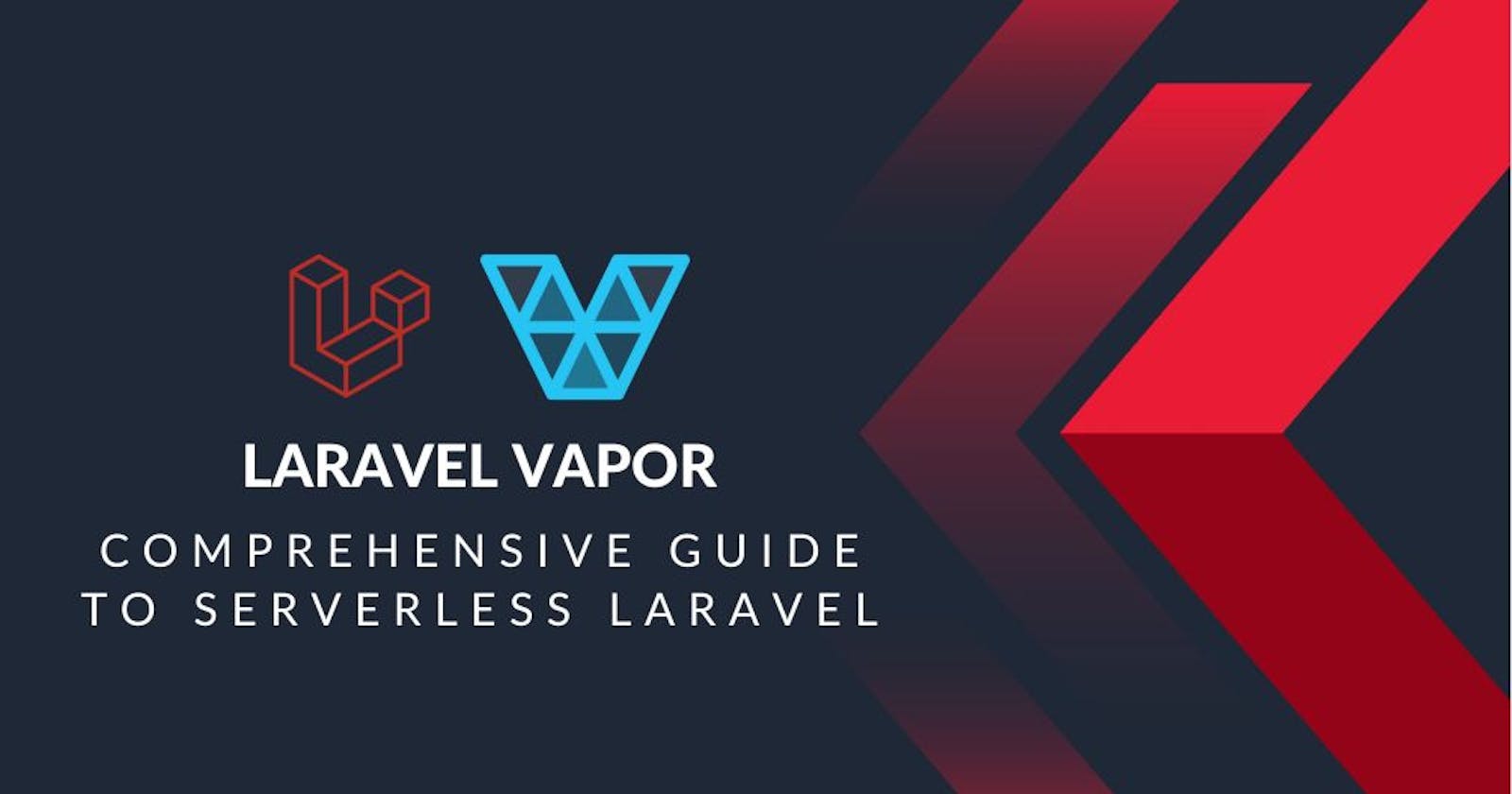Laravel Vapor: A Comprehensive Guide to Serverless Laravel
Laravel Vapor is a serverless deployment platform for Laravel applications. It allows you to deploy your Laravel applications without having to manage
If you're a developer who uses Laravel, you've probably heard of Laravel Vapor. But what exactly is Laravel Vapor, and how can it benefit you and your projects? In this article, we'll delve into everything you need to know about Laravel Vapor, including its features, benefits, and how to get started.
What is Laravel Vapor?
Laravel Vapor is a serverless deployment platform for Laravel applications. It allows you to deploy your Laravel applications without having to manage servers, databases, or infrastructure. With Laravel Vapor, you can focus on developing your application, while Vapor handles the deployment and scaling.
How does Laravel Vapor work?
Laravel Vapor is built on top of Amazon Web Services (AWS). When you deploy your application to Vapor, it creates a set of AWS resources, including an Amazon Elastic Container Service (ECS) cluster, an Application Load Balancer (ALB), and a database.
Vapor then deploys your application to the ECS cluster and configures the ALB to route traffic to your application. The database is also configured and connected to your application.
One of the key benefits of using Laravel Vapor is that it scales your application automatically. As traffic to your application increases, Vapor will automatically spin up additional ECS instances to handle the load. When traffic decreases, Vapor will spin down these instances to save you money.
Features of Laravel Vapor
Laravel Vapor comes with a host of features that make it a compelling choice for deploying your Laravel applications. Here are some of the key features:
Automatic Scaling: As mentioned earlier, Vapor automatically scales your application based on traffic.
Zero Downtime Deployment: Vapor deploys your application without any downtime, ensuring that your users can continue to use your application without interruption.
SSL Support: Vapor supports SSL certificates out of the box, ensuring that your application is secure.
Database Management: Vapor manages your database for you, ensuring that it is properly configured and connected to your application.
Custom Domains: You can easily configure custom domains for your application in Vapor.
Monitoring: Vapor provides real-time monitoring of your application, allowing you to identify and resolve issues quickly.
Caching: Vapor comes with built-in caching support, allowing your application to be faster and more responsive.
In this tutorial, we will go through the steps to deploy a Laravel application on Laravel Vapor.
Step 1: Create a Vapor account and set up your AWS credentials
The first step is to create a Laravel Vapor account. You can sign up for a free trial on the Laravel Vapor website. Once you have signed up, you will need to set up your AWS credentials. This involves creating an IAM user in your AWS account with the required permissions and configuring your AWS CLI with the access key and secret key.
Step 2: Set up your Laravel application for Vapor
Next, you will need to configure your Laravel application for Vapor. This involves adding the Vapor CLI tool to your project and configuring your application settings in the vapor.yml file. You can do this by running the following command in your Laravel application directory:
composer require laravel/vapor-cli --dev
Once the Vapor CLI tool is installed, you can run the following command to generate a vapor.yml file:
php artisan vendor:publish --tag=vapor --force
This will create a vapor.yml file in your project root directory. You can configure your application settings in this file, such as your environment variables, database settings, and deployment options.
Step 3: Build and deploy your application
Once your application is configured for Vapor, you can build and deploy your application to the Vapor platform. You can do this by running the following command:
php artisan vapor:deploy
This command will build your application and deploy it to the Vapor platform. You can monitor the deployment progress in the Vapor dashboard. Once the deployment is complete, you can access your application by visiting the URL provided in the Vapor dashboard.
Step 4: Set up custom domains and SSL certificates
If you want to use a custom domain for your application, you can set this up in the Vapor dashboard. You will need to add a CNAME record to your domain registrar to point your domain to the Vapor load balancer. You can also set up SSL certificates for your custom domain in the Vapor dashboard.
Conclusion
Laravel Vapor is a powerful platform for deploying Laravel applications. It allows you to focus on developing your application, while Vapor takes care of the deployment and scaling. With features like automatic scaling, zero downtime deployment, SSL support, and real-time monitoring, Laravel Vapor is a compelling choice for deploying your Laravel applications. So if you're looking for a way to deploy your Laravel applications without having to manage servers or infrastructure, Laravel Vapor is worth checking out.

